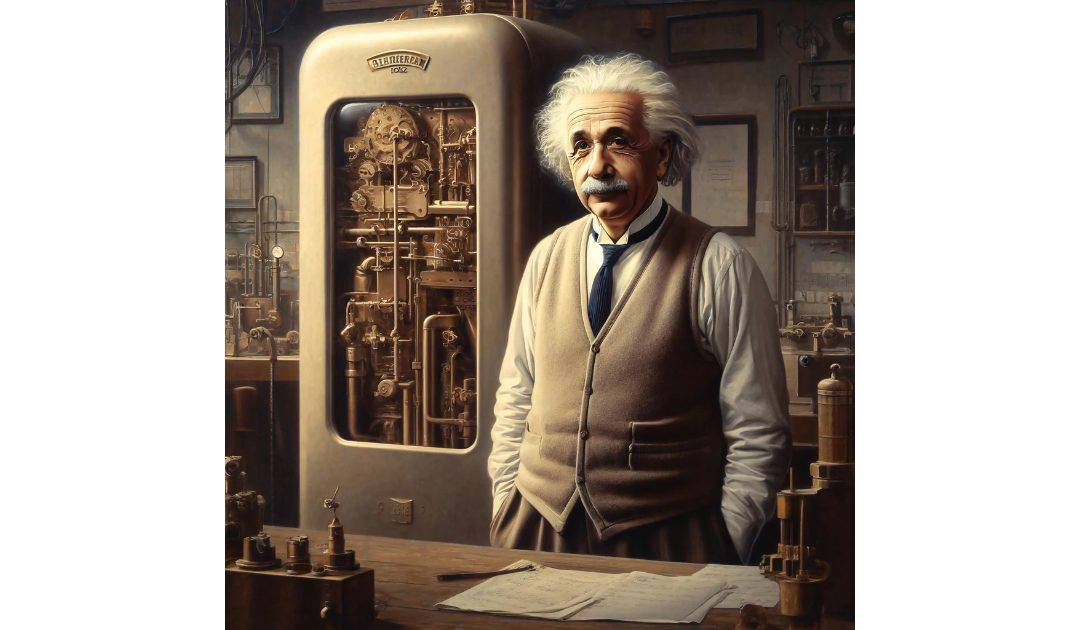I have posted about the invention of the ballpoint pen and the printing press recently. The Einstein refrigerator, invented by Albert Einstein and his former student Leo Szilard in 1926, on the 11th November I’m told, was an innovative cooling device that sought to improve household safety and efficiency. Traditional refrigerators of that time posed significant hazards; they commonly used toxic gases like methyl chloride, ammonia, or sulphur dioxide as refrigerants. Leaks could expose homeowners to deadly fumes, a danger Einstein and Szilard sought to address with their design.
Their refrigerator was unique in that it required no moving parts or electricity to operate, using only heat as its primary source of energy. The design relied on thermodynamic principles, particularly the absorption and compression of gases. By removing moving parts, Einstein and Szilard aimed to create a safer and more durable system, reducing the risk of leaks and maintenance needs. The refrigerator was powered by an external heat source, such as a small gas burner or even solar energy, making it appealing for areas without reliable electricity.
The Einstein-Szilard refrigerator design included a mix of ammonia, water, and butane as the working fluids. It functioned through a cycle where ammonia acted as the refrigerant, butane as the working fluid, and water as an absorber. In this cycle, heat from an external source would drive the ammonia into a gas state, which would then mix with butane. This mixture would flow through the system, eventually absorbing heat and providing cooling. The design was a variation of the absorption refrigeration cycle, but with key innovations to enhance efficiency and eliminate moving parts.
Despite its ingenuity, the Einstein refrigerator never saw widespread commercial adoption. Advances in refrigeration technology and the subsequent development of Freon, a more stable and non-toxic refrigerant (at least at the time), overshadowed Einstein and Szilard’s invention. Although Freon eventually proved to be harmful to the ozone layer, it provided safer and more convenient cooling than the Einstein refrigerator in the short term.
In recent years, however, there has been renewed interest in the Einstein refrigerator, especially as researchers look for sustainable and off-grid cooling solutions. Its design, which relies on heat rather than electricity, aligns well with modern sustainability goals and may offer applications in areas with limited access to power. The Einstein refrigerator exemplifies an early attempt at eco-friendly engineering and showcases how innovative thinking can drive practical solutions to everyday challenges. When I was a child we had a caravan and travelled all over Europe and the UK in it. It had a refrigerator which ran off propane, not electricity. I wondered at the time how burning propane kept the milk cool. Perhaps it was one of Einstein’s.

